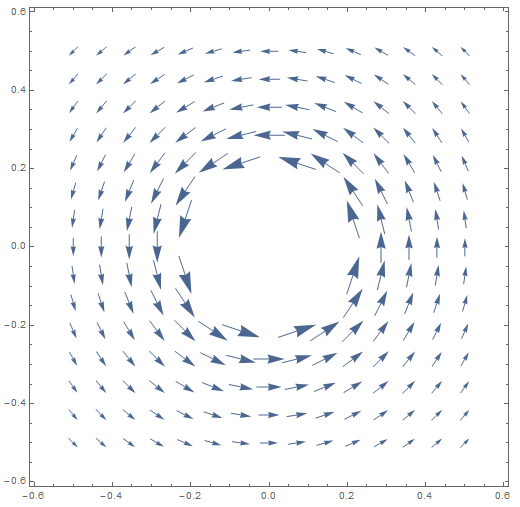The curl in cylindrical coordinates is defined:
$$\nabla \times \vec{A}=\left({\frac {1}{\rho }}{\frac {\partial A_{z}}{\partial \varphi }}-{\frac {\partial A_{\varphi }}{\partial z}}\right){\hat {\boldsymbol {\rho }}}+\left({\frac {\partial A_{\rho }}{\partial z}}-{\frac {\partial A_{z}}{\partial \rho }}\right){\hat {\boldsymbol {\varphi }}}{}+{\frac {1}{\rho }}\left({\frac {\partial \left(\rho A_{\varphi }\right)}{\partial \rho }}-{\frac {\partial A_{\rho }}{\partial \varphi }}\right){\hat {\mathbf {z} }}$$
For vector fields of the form $\vec{A}=\frac{k }{\rho}\hat{\varphi}$ (plotted below), $A_z=A_\rho=0$ and $A_\varphi = k\rho^{-1}$, so the resulting field has zero curl. But choosing $k=\frac{\mu_o I}{2\pi}$ results in the correct solution for the magnetic field around a wire:
$$\vec{B}=\frac{\mu_o I}{2\pi R}\hat{\varphi}$$
This field cannot be curl-free because of Maxwell's equations, Ampere's law, etc. So I must have made a mistake somewhere: Why am I calculating this field to be curl-free?


